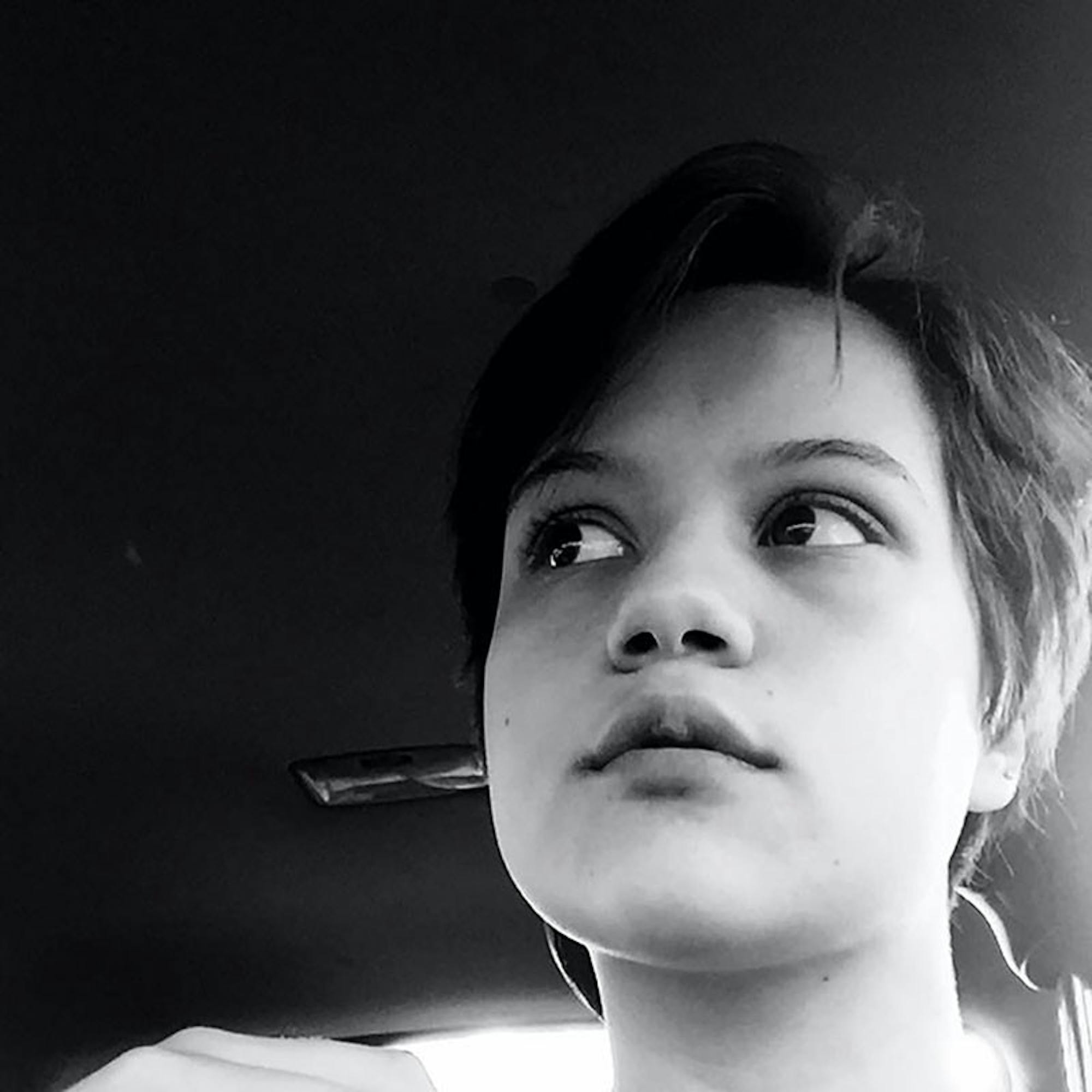Bineshii Hermes-Roach ’17 first began drawing under the instruction of her father, a high school art teacher, who taught “mini-lessons” to her and her brother when they were children. Starting with simple pencil drawings, Hermes-Roach then moved onto charcoal, ink drawings and watercolor — the first three of the many mediums into which she would eventually expand her work.
In high school, Hermes-Roach illustrated children’s books and designed brochures, websites and logos for Grassroots Indigenous Multimedia, a language revitalization organization that develops teaching materials. Recently, she’s finished work on two different children’s books. The first book, done in traditional watercolor, involves animals learning about emotions. The second is a digital art piece about a bat that learns about direction after accidentally flying into a house.
The dichotomy between the art styles of the two books represents Hermes-Roach’s own exploration of both traditional and digital art. At Dartmouth, she is currently involved in the Digital Arts Leadership and Innovation lab. Hermes-Roach, who is Native American, designed last spring’s powwow t-shirt. She is a member of the Tabard gender-inclusive fraternity.
Her time at the College has seen a significant transition for Hermes-Roach as an artist. A former prospective mathematics and studio art double major, Hermes-Roach decided to major only in studio art instead.
“I came to the realization that I had to pick one because [doing both] would take too much from me,” Hermes-Roach said.
Although she enjoyed math and knew that a career in math would be more lucrative, she saud said she decided to stick with studio art because she loved it so much. In the end, she said she wanted to pursue a career in something she loved.
In addition to a transition away from mathematics, Hermes-Roach has developed a stronger interest in digital art and game design. She feels, however, that some of her more successful pieces were done through printmaking in the summer. In order to make the detailed pieces, Hermes-Roach would first make the prints and then add layers of other mediums such as leaves and paint.
“[What I did in printmaking] took everything I knew about traditional media and combined them,” Hermes-Roach said. “I think those [prints] were my most successful in terms of traditional art.”
Hermes-Roach’s work is influenced by a number of factors, including by the media she is exposed to. The influence of the cartoons she watched as a child can be seen in the bold lines and simple colors of many of her drawings. One of Hermes-Roach’s printmaking piece, displayed at the Tabard and entitled “Flower Ring,” is otherworldly and fantasy-like, Vanny Nguyen ’17 said.
Kwaishon Bell ’16, a fellow member of the Tabard, commented on both Hermes-Roach’s creative talent and the distinct style of her pieces.
“Her works are really dreamy, especially her printmaking pieces, and she has a great eye for color,” Bell said. “Her work is very much all around and consistently in her aesthetic.”
Nguyen agreed, saying that Hermes-Roach’s work is “outside of the box.”
“She’s one of my favorite artists on campus,” Nguyen said. “I’ve taken a lot of studio art classes and I hate it when people produce cookie-cutter [work], but Bineshii’s work is not cookie-cutter.”
As a human-centered design minor, Hermes-Roach is interested in the more technical design skills of digital arts. However, even with her math and technical backgroud, the transition from traditional art to digital art has had its difficulties, Hermes-Roach said.
“There was a disconnect — I’m better now, but it was more than an issue of learning how to use programs,” Hermes-Roach said. “I wasn’t able to see what I’m drawing. I had to get used to drawing on a tablet and seeing the actual piece on a computer screen.”
Hermes-Roach also found it difficut to get used to the texture of the tablet drawings.
“It takes time to get your lines clean and not shaky anymore,” she said.
She said that digital art opens up new possibilities and tools for artists. After graduation, she hopes to pursue a career in digital arts. She noted that her exploration of game design, product design and architecture have given her the technical computer skills needed in digital arts. She also plans to collaborate with Grassroots again, writing and illustrating a children’s book depicting treaty rights and the Dakota people’s migration story.
“Digital art isn’t regarded as exactly as fine of an art as traditional art, but I think we can push towards that with the amount of possibility in the field,” Hermes-Roach said.
Hermes-Roach said that her art reflects her complex personality as a creative, chaotic and mathematical individual.
“[Chaos and logic] are very different but they influence my art, and I think when that combination of chaos and logic comes together, it creates what I’m looking for,” Hermes-Roach said.
Last Word:
Favorite musician right now: ZHUFavorite TV show: Steven UniverseFavorite video game: Undertale




